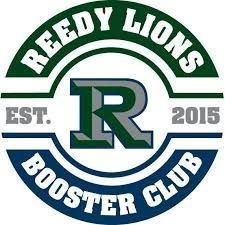Investment or Expense?
Are your home improvements smart investments?
Home Improvements as Smart Investments
The following information is from a national real estate marketing publication. It should be used only as a general guide to ranking the importance of these improvements. Many factors will affect the appraiser's opinion of these improvements including, location, value range of home, market trends, age of home and quality of improvement.
Profitable Investment-
After the first year, major home improvement projects return 86% of their investment.
These projects range in complexity and cost. Typical types of remodeling and renovation projects include:
Major Renovations-Adding or upgrading bathrooms, kitchens, or other additions; installing new decks or patios; or finishing basements or attics.
Repair work-Roof repairs, health and safety repairs, and termite damage repair.
Cosmetic Renovations-Interior and exterior painting, carpeting, molding or floor finishing.
Energy-efficient Improvements-Installation of energy-efficient heating, cooling, electrical, or plumbing systems, and related energy-saving appliances.
Improvements for Accessibility to a Disabled Person-Remodeling kitchens and baths for wheelchair access, lowering kitchen cabinets, installing wider doors, and exterior ramps.
Percentage of your investment that is recouped at resale:
150%
Remodeled Kitchen: A kitchen update can reward a seller with a sizable payback. Just remember though; splurging on fancy finishing materials or sophisticated equipment may cut into your profit. Keep it simple.
100%
Revitalized Lawn and Garden: A verdant lawn and a modest but colorful flowerbed will entice potential buyers. The few hundred dollars invested may yield several thousands in profit.
100%
Fireplace: Especially if it is energy efficient, such as a gas-powered model, a fireplace holds the promise of cozy family gatherings around the warmth of the hearth.
90%
Second Bath: All it takes is a simple 5x9 foot extra bath to make mornings more civilized for most families. But don’t count on a return on extras like a heat lamp or whirlpool tub.
80%
Room Addition: For the most attractive return of your investment dollars later on, the added room should be today’s popular family room or a third bedroom.
60-80%
Remodeled Bath: A master bath is on many buyer’s list, so invest here. If you own only one bath, install two sinks or a double vanity to handle the morning crowd.
70%
Expanded Master Suite: To keep costs down, try to find extra space to create this wish list item by combining existing rooms and spaces. Heavy structural work entailed by adding square feet diminishes your return.
70%
Deck: Outdoor living space is a desirable asset no matter where the locale. No maintenance decking material leaves lots more leisure time, too.
50%
Exterior Paint: Sprucing up tired siding, trim, etc., can take years off the look of an older house.
50%
Finished Attic : You can expect to recoup more of your investment if you make sure the renovation does not detract from the aesthetics of your home. It is especially attractive as an extra bedroom in a small house.
40%
Finished Basement: This is a great way to gain added living space without building a costly addition. If the basement has an access door to the outdoors, the project becomes more valuable.
40%
Heating Systems: Replace it only if your old system is dysfunctional. Depending upon a buyer’s priorities, a new energy efficient furnace may or may not be a selling advantage.
35%
New Windows and Doors: Buyers appreciate changes that improve the look of a house, so attractive new French doors, for example, may be a plus. Energy efficient units are an ecological boom, but may be a resale bust.
30%
Garage: Don’t go overboard to blend it into your home’s architectural style. Its desirability increases if you live in a part of the country with a harsh climate.
0% (Location Dependent)
Swimming Pool: Unless you live where the sun always shines, such as Phoenix, this luxury item can detract from your resale profit.
Spending on Renovations
The home improvement market is growing and is estimated to be nearly $170 billion dollars this year. Actually the remodeling industry is more than twice the size of new construction (excluding land prices).
Spending on home improvement is projected to increase 35% by 2010!
By the year 2010, almost 90 million American will be over the age of 55.
Most older Americans are homeowners. They tend to stay in their homes longer and are less likely to be involved with "Do-It-Yourself" projects.
Older American do less projects but spend more money overall on more expensive discretionary projects.
Housing stock will continue to age.
Fewer new homes will be built since the number of new households is projected to fall.
Mortgage Plus Renovation Loan
This mortgage plan combines the financing for the purchase or refinancing of your home with funds needed for renovating or modernizing. The amount of the mortgage is based on the total estimated value of your home after improvements are made.
One monthly payment covers purchase and renovation costs!
Nearly half of homeowners spend between $500 and $5,000 on home improvements each year.




